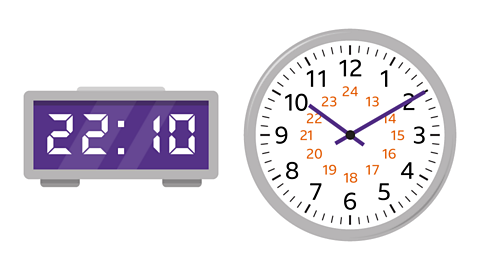Key points
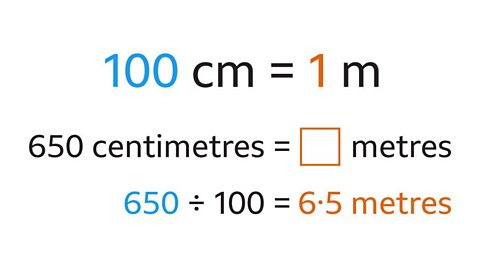
Before measuring something, it is important to know which unit to use. Estimating its approximate size by comparing it with a more familiar object can help.
The metric system is a system of measurementA number that shows the size or amount of something..
Types of measurement include working out lengthThe distance measured between two points., massHow much matter is contained in an object. It is similar to weight, but weight is affected by gravity. An object mass cannot change but its weight can depend on where it is measured. and capacityThe maximum quantity a container can hold when full..
Commonly used metric units include the following:
- Length: centimetres, metres and kilometres
- Mass: grams, kilograms and tonnes
- Capacity: litres, millilitres and cubic centimetres

How to use estimation to find an appropriate unit
In order to find a suitable unit of measure for something, it is important to consider and estimate its size first. This helps in deciding what an appropriate unit might be, given the size of the quantity being measured, eg:
- Whether it would be better to measure the distance between Birmingham and Brighton in metres or kilometres, or the mass of a mobile phone in grams or kilograms.
When estimating the measurement of an object, it is useful to imagine it in relation to another object with a known size. Common objects with known sizes include:
- The height of a standard door, which is commonly 2 m (metres).
- The capacity of a can of drink, commonly 330 ml (millilitres).
- The mass of a bag of sugar, commonly 1 kg (kilogram).
Examples
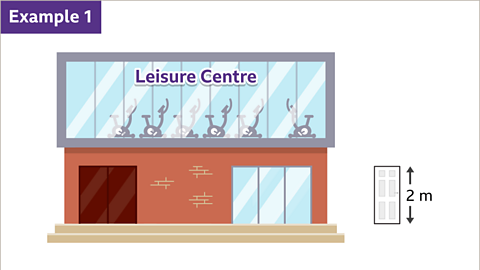
Image caption, Work out what metric unit could be used to estimate the height of a leisure centre. Using the fact that the height of a standard door is 2 metres can help with making an estimate. The metric unit used to measure the height of this building would be metres.
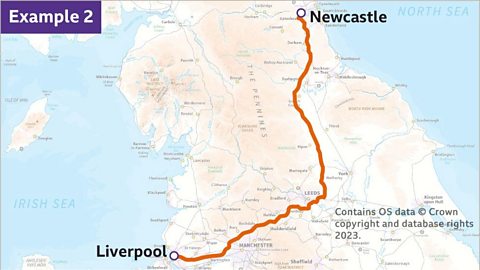
Image caption, Work out the metric unit used to estimate the distance between Liverpool and Newcastle. The distance between two cities is significantly greater than the height of a standard door, meaning that metres would not be an appropriate metric unit to use. Kilometres would be a far more appropriate unit of length.
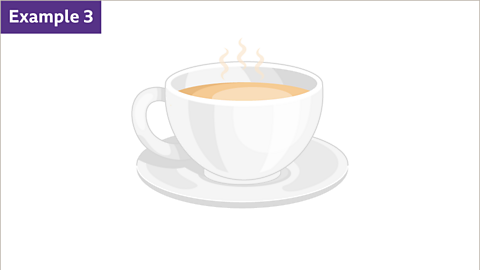
Image caption, Work out the metric unit that could be used to estimate the amount of tea in a cup.

Image caption, Knowing that the capacity of a standard can of drink is 330 ml can help with making an estimate. This means that the metric unit used to estimate the amount of tea in the cup would be millilitres.
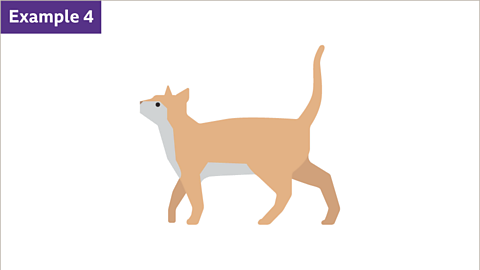
Image caption, Work out what metric unit could be used to estimate the weight of a cat.
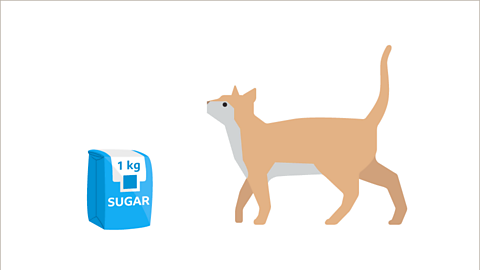
Image caption, Knowing that the weight of a standard bag of sugar is 1 kg can help with making an estimate. This means that the metric unit used to estimate the weight of a cat would be kilograms.
1 of 6
Question
What metric unit could be used to estimate the weight of an aeroplane?
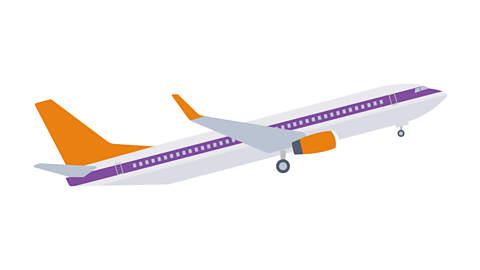
The metric unit to estimate the weight of an aeroplane would be tonnes.
A small car weighs around 1 tonne. An aeroplane is significantly larger than a car.
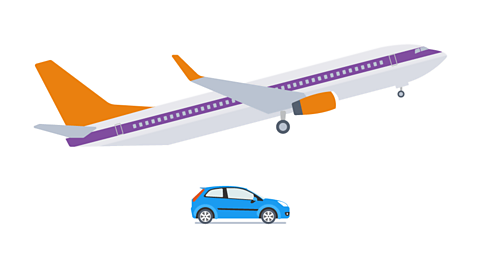
How to convert between metric units
Objects can be measured in different units, depending on their size. It is important to know the conversionThe process of changing the value of something from one form to another. between metric units.
The table below shows some of the common metric units and their equivalents:
| Length | 1 km = 1000 m | 1 m = 100 cm | 1 cm = 10 mm |
| Weight | 1 tonne = 1000 kg | 1 kg = 1000 g | 1 g = 1000 mg |
| Capacity | 1 l = 100 cl | 1 cl = 100 ml | 1 l = 1000 ml = 1000 cm³ |
Examples

Image caption, Work out what 3 m is in centimetres. To convert a larger unit to a smaller unit (eg m to cm) first check the number of small units needed to make one larger unit. Then, multiply that number by the number of larger units.
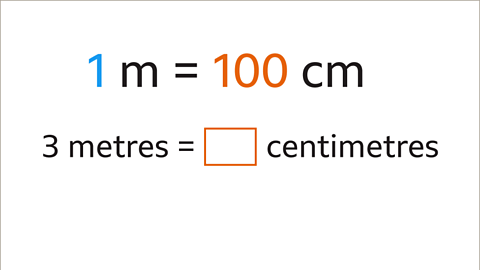
Image caption, 1 metre is equivalent to 100 centimetres.
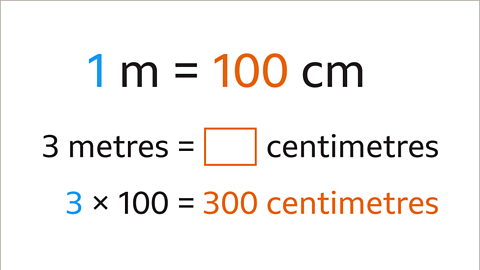
Image caption, This represents converting a larger unit into a smaller unit. Multiply the distance (3 metres) by the conversion factor (100). 3 × 100 = 300. 3 m = 300 cm.
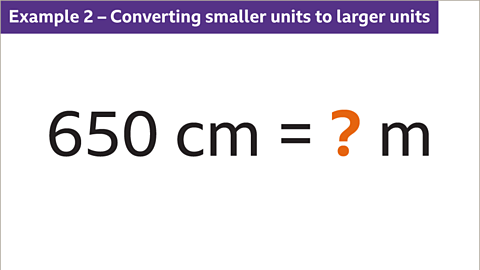
Image caption, Work out what 650 cm is in metres. To convert a smaller unit to a larger unit (eg cm to m) divide it by the number of smaller units which are needed to make one larger unit.
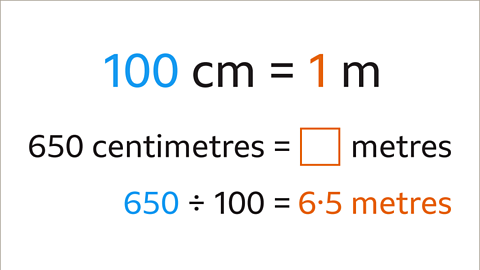
Image caption, This represents converting a smaller unit into a larger unit. Divide the distance (650 centimetres) by the conversion factor (100). 650 ÷ 100 = 6.5. 650 cm = 6.5 m.

Image caption, What is the perimeter of the shape in metres?
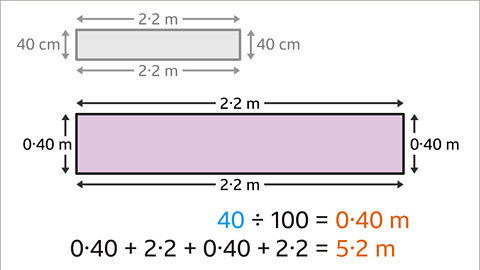
Image caption, Convert the two lengths which are measured in centimetres into metres. 40 ÷ 100 = 0.40 m. To find the perimeter add the four lengths of the rectangle together. 0.40 + 2.2 + 0.40 + 2.2 = 5.2. The perimeter of the rectangle is 5.2 m.
1 of 7
Question
Convert 4.2 km into metres.
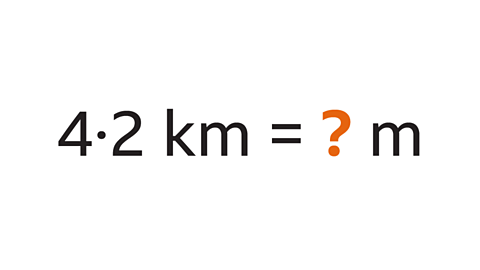
This represents converting a larger unit into a smaller unit.
Multiply the distance (4.2 km) by the conversion factor (1000).
4.2 × 1000 = 4200
4.2 km = 4200 m

How to use ratio to convert between Imperial and metric units
Imperial measurementA number that shows the size or amount of something. are a system of weights and measures originally developed in Britain. The system is similar to standard units in the USA, but not always.
Examples of Imperial measures include:
- lengthThe distance measured between two points., such as inches, feet and yards.
- Weight, such as pounds and ounces.
- volumeThe amount of space occupied by a 3D shape. May also be referred to as capacity., such as fluid ounces and gallons.
The metric system has replaced the Imperial system in most countries. The conversionThe process of changing the value of something from one form to another. between different metric units are all based on conversions of 10, 100 and 1000. Imperial conversions can feel more difficult to remember. However, a significant number of people in the UK still prefer to measure using Imperial units.
Ratio is a helpful method to convert between Imperial measurements. Given a ratio relating two units, convert from one unit to another.
To convert from one unit to another:
- Divide the given amount by the parts allocated to the unit being converted from.
- Multiply by the number of parts allocated to the unit being converted to.
Examples
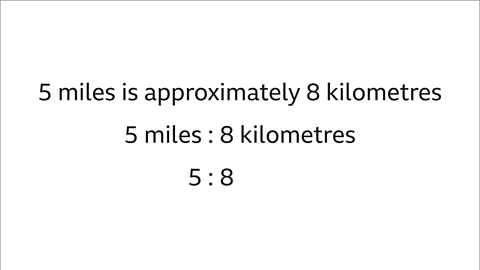
Image caption, 5 miles is approximately 8 kilometres. The ratio 5 : 8 can be used to convert between miles and kilometres.
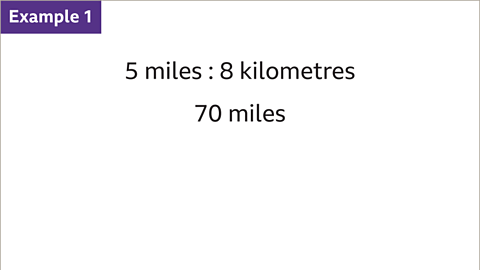
Image caption, Given that 5 miles is 8 kilometres, convert 70 miles to kilometres.
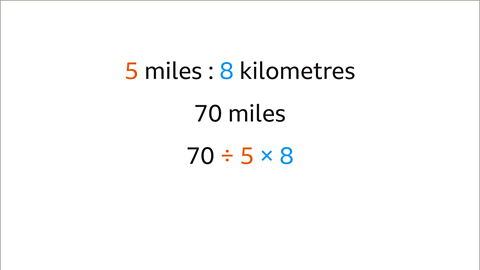
Image caption, Divide the given amount (70) by the parts allocated to the unit being converted from (5) and then multiply by the number of parts allocated to the unit being converted to (8).
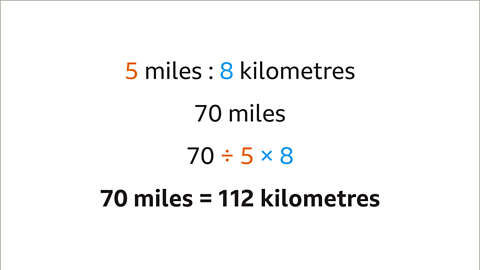
Image caption, 70 miles is 112 kilometres.
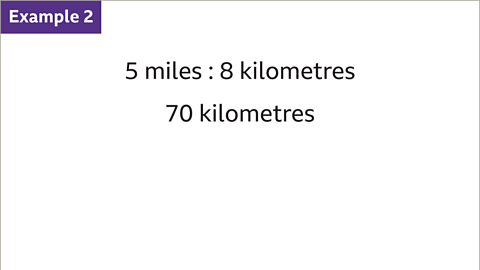
Image caption, Given that 5 miles is 8 kilometres, convert 70 kilometres to miles.
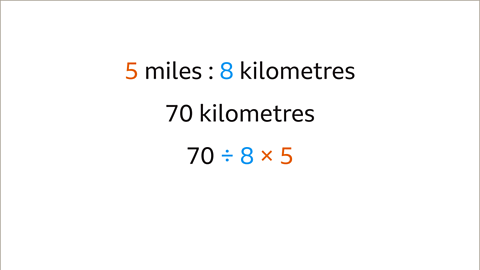
Image caption, Divide the given amount (70) by the parts allocated to the unit being converted from (8) and then multiply by the number of parts allocated to the unit being converted to (5).
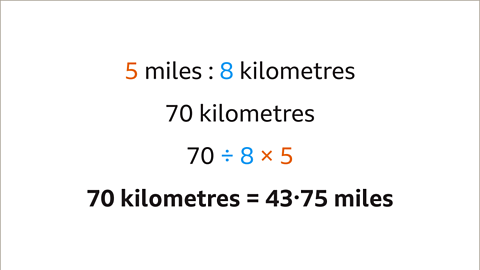
Image caption, 70 kilometres is 43∙75 miles.
1 of 7
Question
Given that 5 centimetres is approximately 2 inches, convert 13 cm to inches.
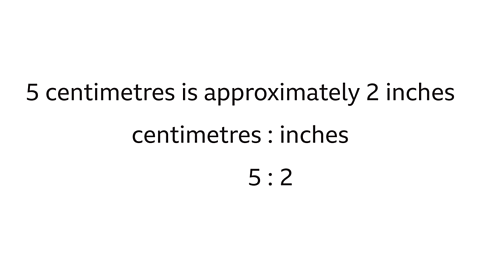
5 cm is 2 inches, the ratio of centimetres to inches is 5 : 2
To convert 13 cm to inches, divide the given amount (13) by the parts allocated to the unit being converted from (5) and then multiply by the number of parts allocated to the unit being converted to (2).
13 ÷ 5 × 2 = 5∙2
13 centimetres is 5∙2 inches.
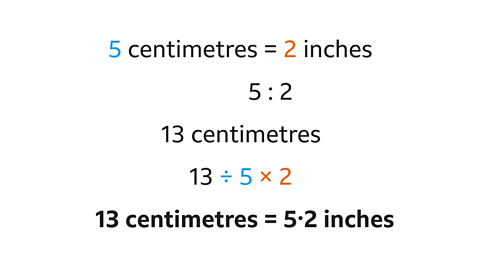
Practise working out how to convert between units
Practise working out how to convert units with this quiz. You may need a pen and paper to help you with your answers.
Quiz
Real-life maths

Recognising and using the most appropriate units makes it easier for people to visualise and interpret information that is given to them.
For example, if someone decided to run 1500 metres every day during one month, eg April that has 30 days, they might want to work out how far they will have run overall.
The total distance they would cover is 1500 × 30 (days), which is 45,000 metres.
45,000 metres is difficult to visualise, as it is a large number of relatively small units of measure. In this case it would be more helpful to convert that measure into kilometres. There are 1000 metres in a kilometre, so 45,000 ÷ 1000 = 45
The person would therefore run 45 km over the course of the month.

Game - Divided Islands
Play the Divided Islands game! gamePlay the Divided Islands game!
Using your maths skills, help to build bridges and bring light back to the islands in this free game from BBC Bitesize.

More on Measurement
Find out more by working through a topic
- count2 of 4

- count3 of 4
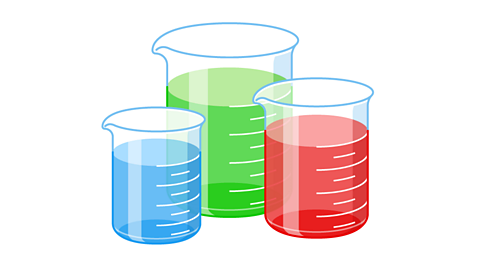
- count4 of 4
